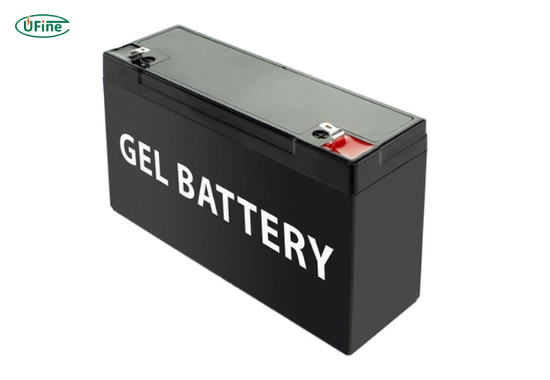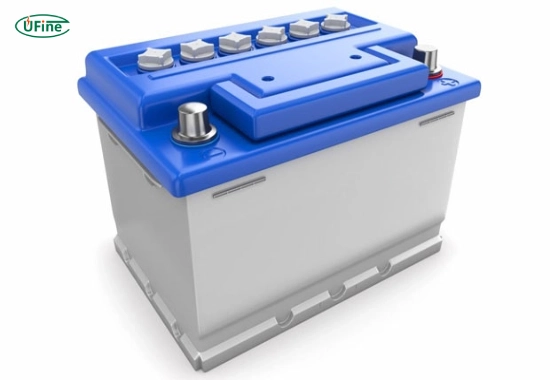
- Part 1. What is a gel battery?
- Part 2. What is a lead-acid battery?
- Part 3. How do gel batteries work?
- Part 4. How do lead-acid batteries work?
- Part 5. Gel vs AGM vs Flooded Lead-Acid
- Part 6. Performance comparison: gel vs. lead-acid
- Part 7. Gel vs Lead-Acid — Which Should You Choose?
- Part 8. Cost comparison: gel vs. lead-acid
- Part 9. Applications for gel batteries
- Part 10. Applications for lead-acid batteries
- Part 11. Environmental impact of gel vs. lead-acid
- Part 12. Practical disadvantages & cautions of gel vs. lead-acid
- Part 13. Summary Recommendation
- Part 14. FAQs about gel battery vs acid battery
Quick Answer: Choose a gel battery if your application needs deep cycling, safety, and long-term durability such as solar storage, marine use, mobility, or off-grid power. Choose a lead-acid battery if you need high starting current, budget-friendly backup power, or forklift/UPS use.
- Lifespan: Gel 5–15 years vs Lead-acid 3–5 years
- Depth of Discharge (DoD): Gel up to 80%, Lead-acid ≤50%
- Maintenance: Gel = maintenance-free, Lead-acid = water & terminal care
- Safety: Gel = sealed & leak-proof, Lead-acid = liquid electrolyte
- Cost: Gel = higher upfront, Lead-acid = cheaper initially
When choosing the correct battery for your needs, the debate between gel and lead-acid batteries is crucial. Both types have unique features, benefits, and drawbacks that significantly affect performance, longevity, and cost. This article compares gel and lead-acid batteries in-depth and helps you choose based on your specific requirements.
Part 1. What is a gel battery?
A gel battery is a specialized valve-regulated lead-acid (VRLA) battery that uses silica gel to immobilize the electrolyte. This design allows the battery to function effectively in various orientations without the risk of leakage. Gel batteries are widely recognized for their deep cycle capabilities, making them an excellent choice for applications requiring consistent power over extended periods.
Key Features of Gel Batteries
- Sealed Design: Gel batteries are sealed units that prevent gas emissions during charging and discharging.
- Maintenance-Free: Unlike traditional lead-acid batteries, gel batteries do not require water refilling or frequent terminal checks.
- Deep Cycle Capability: They can be discharged deeply (70–80%) without significant degradation, which extends lifespan.
- Temperature Tolerance: Gel batteries perform reliably in extreme hot and cold environments, reducing capacity loss.
Part 2. What is a lead-acid battery?
A lead-acid battery is one of the oldest rechargeable battery technologies. It uses lead dioxide (PbO2) as the positive plate, sponge lead (Pb) as the negative plate, and a sulfuric acid solution as the electrolyte. This technology is widely used due to its affordability, high current output, and proven performance across industrial and automotive applications.
Key Features of Lead-Acid Batteries
- Affordability: Lead-acid batteries are generally less expensive, ideal for budget-sensitive users.
- High Discharge Rates: They deliver high bursts of current needed for vehicle engine starting, forklifts, and heavy machines.
- Proven Technology: Over 150 years of use ensures broad availability, reliability, and robust standards.
Part 3. How do gel batteries work?
Gel batteries operate on the same electrochemical principles as traditional lead-acid batteries, but with a crucial electrolyte enhancement. By mixing sulfuric acid with silica powder, the electrolyte becomes thick and gel-like. This immobilization prevents spillage, reduces gas emission, and minimizes internal corrosion.
Advantages of Gel Battery Operation
- Safety: The sealed VRLA design minimizes acid leaks and prevents hydrogen gas release.
- Low Self-Discharge: Gel batteries exhibit low energy loss when stored, ideal for seasonal or intermittent use.
- Stable Deep Cycling: Their electrolyte structure makes plates less stressed during deep discharge cycles.
Part 4. How do lead-acid batteries work?
Lead-acid batteries generate electricity through chemical reactions between lead plates and the sulfuric acid electrolyte. During discharge, lead dioxide reacts with sulfuric acid to produce lead sulfate and water while releasing electrical energy. When charging, the reaction reverses and restores sulfuric acid concentration.
Advantages of Lead-Acid Battery Operation
- Simplicity: Their straightforward design makes manufacturing and servicing easier.
- Robustness: They tolerate vibration, harsh industrial environments, and high discharge loads.
- Quick Charging: Lead-acid batteries charge faster than gel batteries under standard current profiles.
Part 5. Gel vs AGM vs Flooded Lead-Acid
Gel batteries and AGM are both VRLA types, but they immobilize electrolytes differently. Flooded lead-acid uses liquid sulfuric acid and requires open venting and service.
- Gel: Silica gel electrolyte; best for deep cycle and long-term endurance.
- AGM: Fiberglass mat absorbs electrolyte; ideal for high current & automotive/UPS.
- Flooded: Cheapest, but requires regular water refilling and maintenance.
Part 6. Performance comparison: gel vs. lead-acid
When comparing gel and lead-acid batteries, consider core performance metrics:
Lifespan
- Gel Batteries: 5–15 years depending on discharge depth and temperature.
- Lead-Acid Batteries: 3–5 years under normal cycles.
Depth of Discharge (DoD)
- Gel: Up to 80% DoD without irreversible damage.
- Lead-acid: Optimal above 50% DoD to avoid sulfation.
Charging Speed
- Gel: Slower charging; must use gel-compatible charging curves.
- Lead-acid: Faster charging; tolerates standard automotive chargers.
Maintenance Requirements
- Gel: Maintenance-free, sealed construction.
- Lead-acid: Requires periodic water refilling, gas venting, and terminal cleaning.
|
Feature |
Gel Battery |
Lead-Acid Battery |
|
Lifespan |
5–15 years |
3–5 years |
|
Depth of Discharge |
Up to 80% |
Up to 50% |
|
Charging Speed |
Slower |
Faster |
|
Maintenance |
Maintenance-free |
Requires regular checks |
Part 7. Gel vs Lead-Acid — Which Should You Choose?
Choose a Gel Battery if:
- You need deep cycling: solar storage, RVs, marine, mobility scooters.
- You operate in extreme temperatures.
- You need long-term reliability and minimal maintenance.
- Your equipment runs for long periods at steady load.
Choose a Lead-Acid Battery if:
- You need high burst current (vehicles, forklifts, UPS).
- You want the lowest upfront cost.
- You do not discharge batteries deeply.
- You need quick availability and standard chargers.
Part 8. Cost comparison: gel vs. lead-acid
Cost is a critical factor when choosing between gel and lead-acid batteries:
- Initial Cost: Gel batteries have a higher upfront cost due to advanced electrolyte stabilization and longer cycle life.
- Long-Term Value: Gel batteries may be more cost-effective over their lifespan because they withstand more cycles and require no maintenance.
Part 9. Applications for gel batteries
Gel batteries are particularly suited for applications that demand deep cycle performance, safety, and reliable operation in challenging conditions:
- Solar Energy Systems: Their deep cycle capability and low self-discharge make them ideal for off-grid and backup solar storage.
- Marine Use: The sealed, leak-proof design reduces maintenance and prevents electrolyte spills on boats and yachts.
- Electric Mobility & EV Auxiliary: Suitable for mobility scooters, small electric vehicles, and as auxiliary batteries in larger EV systems where deep discharge is required.
- Telecom & Remote Backup: Good for remote telecom sites that need long-term standby and infrequent maintenance.
Part 10. Applications for lead-acid batteries
Lead-acid batteries remain widely used where high starting current, low initial cost, or robust industrial use is needed:
- Automotive Starting Systems: Their ability to deliver high currents makes them the go-to for car and truck starters.
- Uninterruptible Power Supplies (UPS): Reliable and cost-effective for short-term power backup in data centers and office equipment.
- Forklifts and Heavy Equipment: Their ruggedness and established service networks suit industrial vehicles and material handling.
- Stationary Backup: Flooded or AGM variants are commonly used in larger, stationary battery banks where maintenance is acceptable.
Part 11. Environmental impact of gel vs. lead-acid
Both gel and lead-acid batteries contain lead and sulfuric acid, so their environmental footprint depends largely on recycling and disposal practices:
- Recyclability: Lead-acid batteries are among the most recycled consumer products; both gel and flooded types can be recycled to recover lead and plastic.
- Hazards: Improper disposal can release toxic lead and acid into soil and water. Gel batteries reduce spill risk during use but still require proper end-of-life handling.
- Best Practice: Always return spent batteries to certified recycling centers or follow local hazardous waste guidelines to minimize environmental harm.
Part 12. Practical disadvantages & cautions of gel vs. lead-acid
Understanding limitations helps avoid premature failure and safety issues:
- Gel battery downsides: Higher upfront cost, slower charging, and sensitivity to incorrect charging profiles (requires gel-compatible chargers or charger settings).
- Lead-acid battery downsides: Regular maintenance (water topping for flooded cells), higher self-discharge in some types, risk of leakage if not VRLA, and shorter useful cycle life under deep discharge.
- Charger compatibility: Never charge gel batteries with aggressive bulk/fast charge profiles designed for flooded cells—use a charger with an appropriate gel/VRLA curve.
- Temperature effects: Both types lose capacity in cold; high ambient heat accelerates degradation—follow manufacturer temperature ratings.
Part 13. Summary Recommendation
In short, select a gel battery when deep cycling, maintenance-free operation, and safety are priorities (solar, marine, mobility). Choose a lead-acid battery when upfront cost, high burst current, or widely-available serviceability matters more (starter batteries, UPS, industrial equipment).
For many users the smart approach is to map your primary needs—DoD, cycle frequency, temperature range, maintenance capacity, and budget—then pick the chemistry that best matches those constraints.
Part 14. FAQs about gel battery vs acid battery
Is gel battery better than lead acid?
Yes—if you need deep cycles, safety and long life. Lead-acid is better for engine starting or budget.
Why does gel battery last longer?
Because its electrolyte is stabilized in silica gel, reducing plate corrosion and gas loss.
Can I replace lead-acid with gel?
Yes, but charging must be adjusted. Using a standard charger may damage gel cells.
Is gel battery good for solar?
Excellent. Gel batteries handle deep discharge cycles (up to 80%) and temperature extremes.
Related Tags:
More Articles

Battery Load Test: A Comprehensive Guide
Step-by-step battery load test guide for car, solar & industrial use. Learn how to load test a battery, interpret voltage charts, and avoid common mistakes.
The Comprehensive Guide to Battery Balancing and Battery Balancer
Discover how battery balancers improve lithium battery performance, lifespan, and safety. Learn types, functions, and tips to choose the right balancer.
What Is the Best Voltage for a Chainsaw Battery?
Compare 12V-80V chainsaw batteries for light pruning, medium firewood, and professional cutting. See best battery chainsaw with runtime charts and safety tips.
Lithium VS. Alkaline Batteries: A Comprehensive Comparison
Lithium batteries last 3–7× longer than alkaline and perform better in cold weather. Compare lifespan, cost, safety, and best uses to choose the right battery.
Comparing Lithium-Sulfur and Lithium-Ion Batteries: Which is Right for You?
Compare lithium-sulfur (Li-S) and lithium-ion batteries on energy, lifespan, cost, safety, and applications. Best choice for drones, EVs, and electronics.




